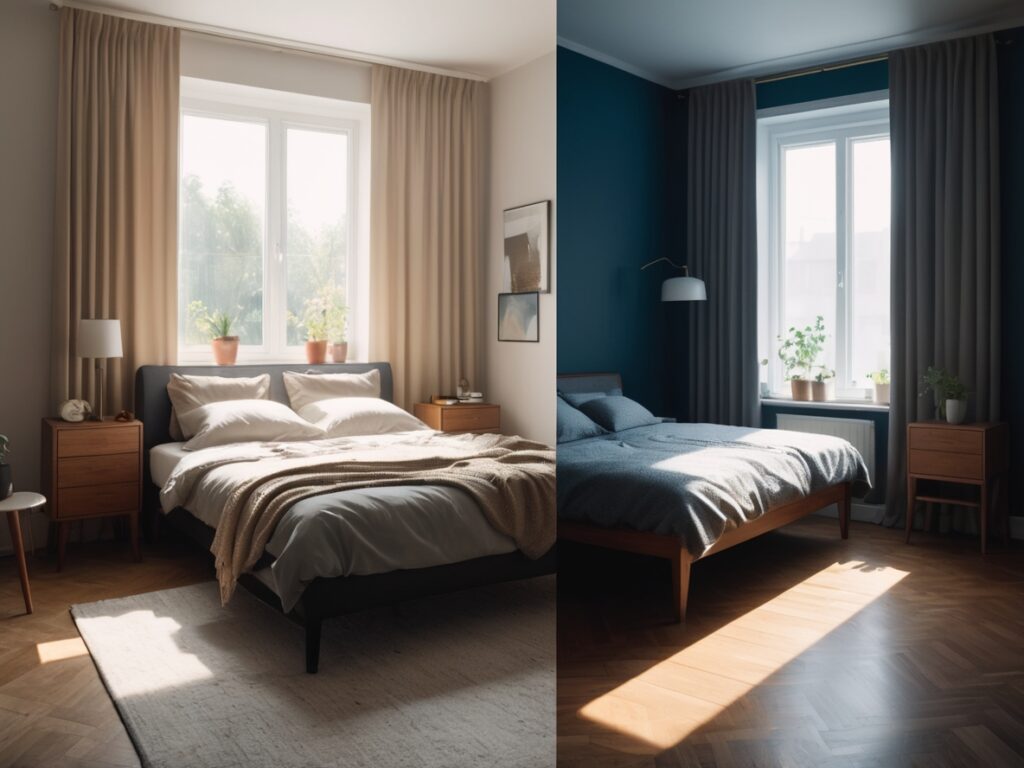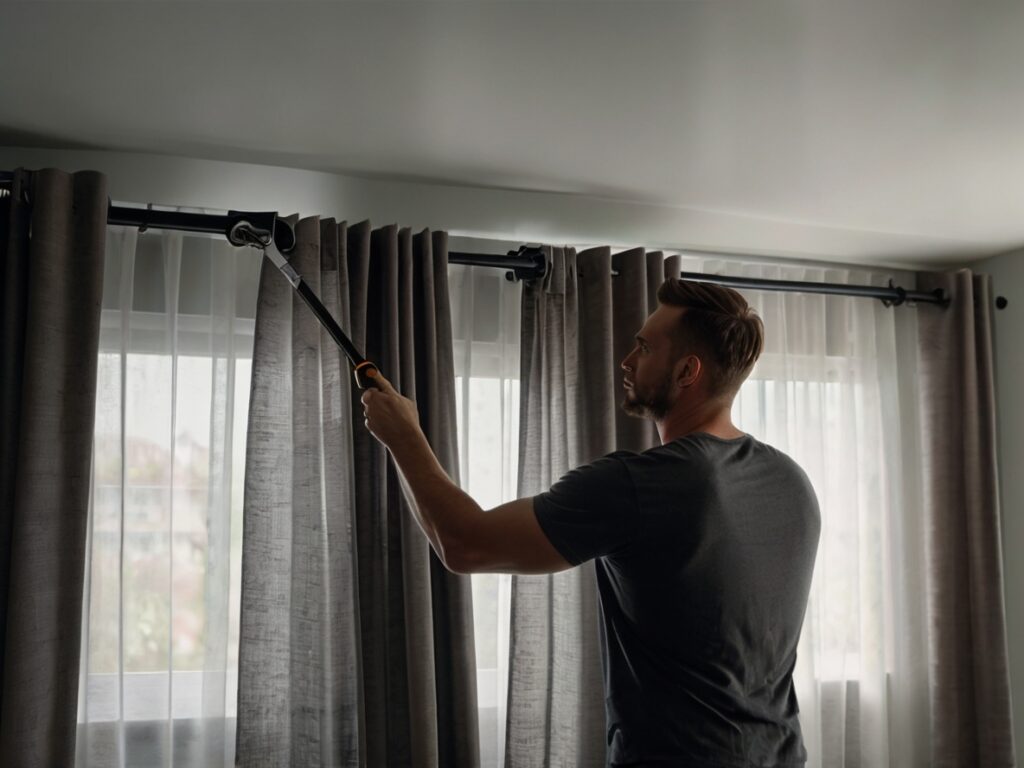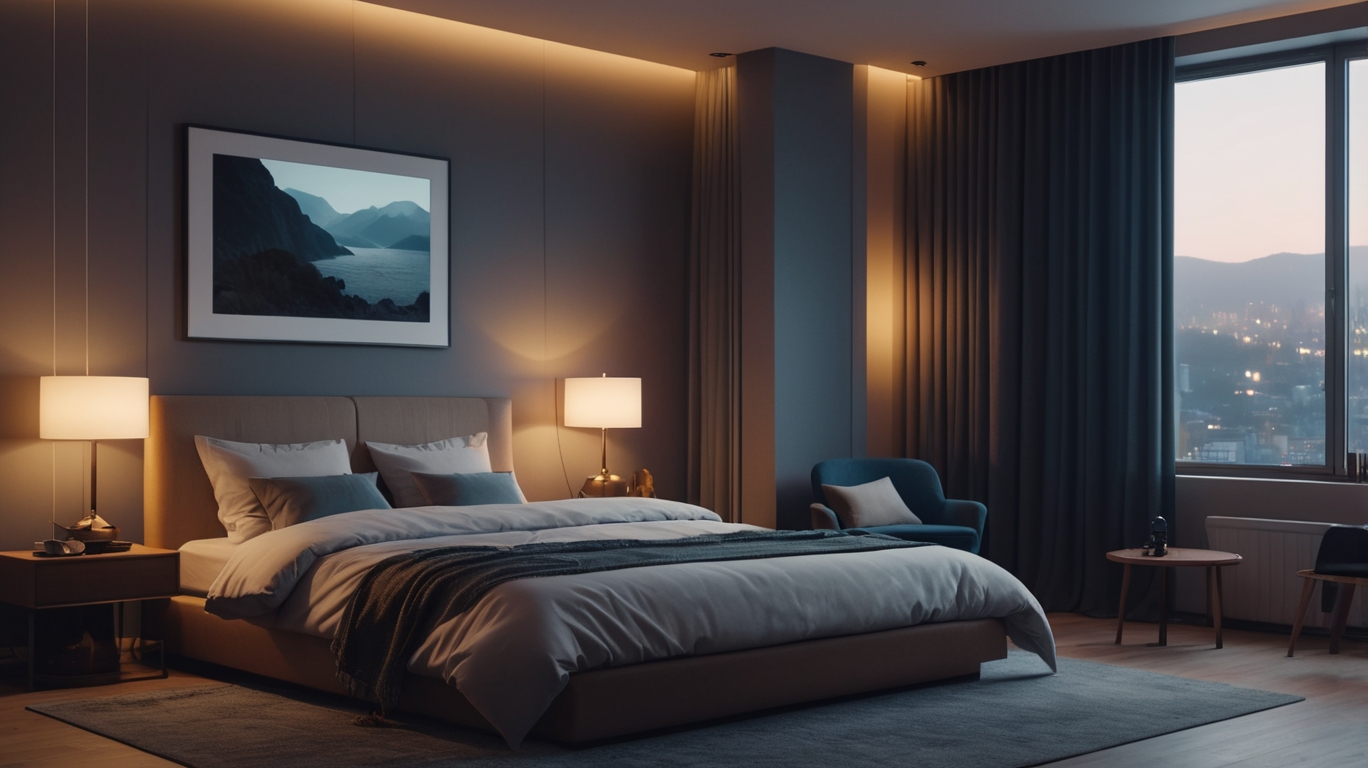Introduction: Why Is Falling Asleep So Hard These Days?
If you’ve ever found yourself tossing and turning in bed, staring at the ceiling long past midnight, you’re not alone. For millions of people across the U.S. and Canada, sleep problems have become an all-too-familiar struggle. Whether it’s streetlights sneaking in through your bedroom window, the blue glow of early dawn disrupting your rest, or your toddler waking up at 5 AM due to sunlight—light pollution can be a major sleep disruptor. That’s where blackout curtains come into play.
But let’s be honest—despite their name being thrown around by interior designers and sleep coaches, many people still don’t fully understand what blackout curtains are or how they work. Are they the same as regular curtains? Do they completely block light? Are they expensive or difficult to install?
If these questions have ever crossed your mind, you’re in the right place.
This post is your no-fluff, all-clarity guide to blackout curtains. We’ll uncover what they are, how they differ from other window treatments, the pros and cons, installation tips, real-life examples, and how to choose the right ones for your specific needs. By the end, you’ll have the confidence to decide whether blackout curtains are the missing piece to your sleep routine.
So if your current setup is keeping you from the deep, restorative sleep your body desperately needs, read on. A simple curtain switch could transform your nights—and your days.
What Are Blackout Curtains, Really?
Before we go further, let’s break down the basics.
Blackout curtains are specially designed window treatments made from thick, tightly woven fabric that blocks nearly all incoming light. Unlike standard drapes or sheer panels, blackout curtains often have a light-absorbing or multi-layer backing that prevents even bright sunlight or streetlights from penetrating your room.
How Are They Different from Room-Darkening Curtains?
It’s easy to confuse blackout curtains with room-darkening or light-filtering options. Here’s how they differ:
| Type | Light Blocking Ability | Common Use |
|---|---|---|
| Sheer Curtains | Low | Decorative, soft daylight |
| Light-Filtering | Moderate | Living rooms, dining areas |
| Room-Darkening | High (70-90%) | Bedrooms, nurseries |
| Blackout Curtains | Very High (95-100%) | Bedrooms, media rooms, night shifts |
Blackout curtains are ideal if you’re looking for total darkness, whether for sleep, home theaters, or shift work.

Common Fabrics and Materials
- Polyester blends: Durable, easy to clean
- Triple-weave fabric: Three layers for thermal insulation and light blocking
- Foam-backed or thermal-lined: Extra energy efficiency
Most quality blackout curtains are made from a blend of these, combining aesthetic appeal with performance.
Real-Life Scenario
Consider Jenny, a working mom in Chicago. Her baby kept waking up at 5 AM due to early sunlight. After installing blackout curtains, not only did the baby sleep until 7 AM, but Jenny also started feeling more rested. Sometimes, it really is the small upgrades that change everything.
The Science Behind Blackout Curtains and Better Sleep
If you’re still wondering whether curtains can really improve your sleep, the answer lies in circadian rhythm—your body’s internal clock.
How Light Affects Your Sleep Cycle
Your body relies on natural light cues to regulate sleep and wake cycles. When your room is exposed to artificial light at night—like street lamps or glowing billboards—your brain suppresses the release of melatonin, the sleep hormone. Even small amounts of light can keep you alert longer, delay REM sleep, and reduce sleep quality.
What Blackout Curtains Do for Your Brain
By eliminating outside light, blackout curtains help:
- Stimulate melatonin production
- Shorten time to fall asleep
- Increase REM and deep sleep
- Reduce nighttime awakenings
Case Study: Shift Workers
In cities like Toronto and New York, many professionals work night shifts and sleep during the day. Studies show that using blackout curtains can help shift workers improve sleep duration by up to 2 hours daily—reducing fatigue and boosting mental performance.
Psychological Benefits
Complete darkness also contributes to a sense of safety and calm, reducing anxiety before sleep. This can be a game-changer for people with insomnia or those dealing with stress-related sleep issues.
If you’re battling poor sleep, blackout curtains are one of the most cost-effective tools you can try—no prescription needed.
Pros and Cons of Blackout Curtains
Like any home upgrade, blackout curtains come with both advantages and trade-offs. Let’s explore both sides to help you make an informed decision.
Pros
1. Total Light Control:
Blocks up to 99% of incoming light—ideal for uninterrupted sleep, movie nights, or even photography.
2. Noise Reduction:
The thick material can muffle outdoor sounds like traffic or barking dogs, creating a quieter space.
3. Energy Efficiency:
Insulates rooms by trapping cool air in summer and heat in winter—reducing your energy bills.
4. Privacy:
Prevents silhouettes from showing, giving you complete indoor privacy.
5. UV Protection:
Shields furniture, flooring, and artwork from sun damage.
Cons
1. Heavier Fabric:
Blackout curtains can be bulky, requiring sturdy curtain rods and brackets.
2. Limited Color Choices:
Although improving, some brands still focus on darker, neutral tones.
3. Higher Cost:
Quality blackout curtains often cost more than standard options. Expect to spend $50–$150 per panel.
4. May Block Natural Light:
If not paired with sheers or tie-backs, you might find your space darker than preferred during the day.
Real-Life Tradeoff
Mike, a freelance writer in Seattle, loves natural light. Initially hesitant, he installed blackout curtains with tie-backs and a dual-rod system—now he gets light during the day and pitch darkness at night. It’s all about balance and setup.
Choosing the Right Blackout Curtains for Your Space
Not all blackout curtains are created equal. Here’s a guide to picking the perfect pair for your needs.
Key Factors to Consider
1. Room Purpose:
- Bedrooms: Full blackout for sleep
- Nurseries: Soft pastels with blackout lining
- Media Rooms: Heavy curtains with sound absorption
2. Curtain Length:
- Floor-length: Best for full coverage
- Sill-length: More practical for kitchens or small windows
3. Curtain Type:
- Grommet: Modern, easy to slide
- Rod pocket: Traditional, less movement
- Back-tab: Sleek finish, good for insulation
4. Color and Style:
Choose a shade that complements your decor. Blackout doesn’t mean black—brands now offer whites, blues, and even floral prints with blackout linings.
5. Layering Options:
Pair blackout curtains with sheers on a double rod to get daytime light and nighttime privacy.
Best Blackout Curtain Brands in the U.S. & Canada
- NICETOWN: Affordable, popular on Amazon
- Eclipse: Known for high-quality thermal curtains
- Pottery Barn: Stylish and premium
- IKEA MAJGULL: Budget-friendly with decent blackout properties
Budget Breakdown
| Brand | Price per Panel | Key Feature |
|---|---|---|
| NICETOWN | $25–$40 | Triple-weave fabric |
| Eclipse | $30–$60 | Noise reduction + blackout |
| Pottery Barn | $100–$150 | Designer looks |
| IKEA | $20–$35 | Affordable & functional |
Before buying, measure your windows and check customer reviews for light-blocking effectiveness.
How to Install Blackout Curtains Like a Pro
You don’t need a professional to get the installation working for you. Just follow these steps:
Tools You’ll Need
- Measuring tape
- Drill or screwdriver
- Wall anchors (for heavy curtains)
- Level (optional, but useful)
Step-by-Step Guide
- Measure Your Window Width and Height
- Add 4–6 inches on each side for full light coverage
- Choose Your Mount Type
- Inside mount (clean look) or outside mount (better blackout)
- Mark Your Bracket Locations
- Typically 4–6 inches above the window frame
- Install Curtain Rod and Hang Curtains
- Use wall anchors if needed for heavy-duty rods
Installation Tips
- Choose a curtain rod with wraparound ends to block side light.
- Consider using Velcro or magnetic strips along curtain edges for a snug, hotel-like blackout.

Real-Life Hack
Tina, an Airbnb host in Vancouver, added thermal blackout curtains using a double rod setup in all guest rooms. Her 5-star reviews often mention how well guests slept—leading to better business and repeat bookings.
Are Blackout Curtains Worth the Investment?
Let’s break down the value from a practical and financial perspective.
Sleep Value
If you value quality sleep—and science tells us you should—blackout curtains are easily worth the cost. Better sleep leads to:
- Improved mental clarity
- Stronger immune function
- Lower stress and anxiety
Imagine waking up feeling refreshed, not groggy. That alone could be worth more than a new mattress or fancy white noise machine.
Energy Savings
Blackout curtains can reduce indoor temperature swings by up to 25%, according to U.S. Department of Energy estimates. That means lower cooling bills in summer and reduced heating in winter.
Emotional Well-being
Whether you’re dealing with postpartum sleep disruptions, night shifts, or city noise, blackout curtains provide a controlled environment—essential for peace of mind and daily energy.
ROI (Return on Investment)
Let’s say you spend $80 on quality blackout curtains for your bedroom:
- You save $10/month on energy = $120/year
- You sleep 1–2 extra hours per night = 30–60 hours/month
- You reduce reliance on sleep aids or supplements
The cost pays for itself in comfort, energy savings, and well-being.
Conclusion: Say Goodbye to Sleepless Nights
If you’ve read this far, you’re likely someone who values your sleep but hasn’t found the right solution yet. The good news? You don’t need to completely revamp your bedroom or spend thousands on gadgets. Sometimes, the simplest fix is the smartest one.
Blackout curtains offer a rare blend of beauty and utility. They give you control over your environment, boost your sleep quality, reduce noise and energy costs, and improve your overall well-being.
So, whether you’re a night-shift nurse, a parent of a newborn, or just someone tired of waking up at dawn—blackout curtains might be your next best purchase. And now, you know exactly what to look for, how to install them, and how to make the most of them.
Ready to sleep better tonight?
Make the switch. Your brain—and your body—will thank you.
